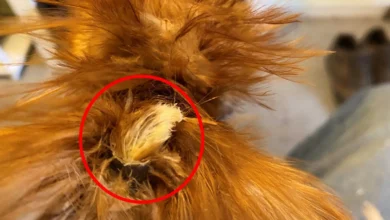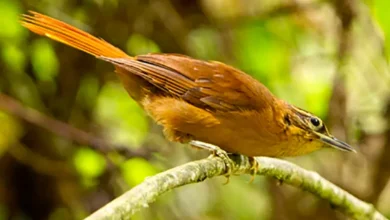The Tawny-tufted Toucanets (Selenidera nattereri) – also known as Natterer’s Toucanets – are toucans found in Brazil, Colombia, French Guiana, Guyana and Venezuela; where they inhabit subtropical or tropical moist lowland forests.
Distribution / Range
The Tawny-tufted Toucanets occur naturally in extreme eastern Colombia (in the Vaupés River region) and southern Venezuela to northwestern Brazil (along the Solimões River – from Tonantins to Codajás, and north to the upper Negro River region). There are unconfirmed reports from Guyana and French Guiana.
Their distribution is patchy and concentrated along rivers.
Alternate (Global) Names
Chinese: ?????? … Czech: Arassari Nattereruv, arassari Natterer?v … Danish: Gulflanket Tukanet … Dutch: Natterer-pepervreter, Natterers Pepervreter … Finnish: Marmorinokkatukaani … French: Araçari de Natterer, Toucanet de Natterer … German: Natterer Arassari, Nattererarassari, Natterer-Arassari … Italian: Tucanetto ciufficrema, Tucanetto ciuffofulvo … Japanese: sanshokukochuuhashi … Norwegian: Quiputukan … Polish: tukanik zóltolicy, tukanik ?ó?tolicy … Portuguese: Sapiroca-de-bico-castanho, Saripoca-de-bico-castanho … Russian: ?????????? … Slovak: tukaník žltolíci … Spanish: Pichilingo Dentado, Tucancito de Pico Corto, Tucancito pico rojo, Tucanete de Natterer … Swedish: Natterertukanett
Description
The plumage is mostly glossy black, with a yellow band across the upper back, greenish-grey bare skin around the eyes with yellow patches on the sides of the eyes. The abdomen and thighs are a bright rusty-orangey color.
They measure about 14 inches (35 cm) in length and weigh about 5.2 – 5.9 oz (148 – 165 g).
They are fairly long-lived with a lifespan around 20 years.
Breeding / Nesting
As part of their mating ritual, they throw fruit to one another. Like all of their other activities, nesting happens high up in hollow areas in trees. The bill is not effective for digging or any other type of extensive excavation work and so they must rely on holes already formed by other means.
The nests are not lined, but the two to four shiny white eggs that are laid each year rest on a few wood chips created while enlarging the opening or on various kinds of regurgitated seeds collected for this purpose. Parents share equally in incubation duties, but rarely sit on the nest for more than an hour at a time and the eggs are often left uncovered. Both parents share in feeding fruit to the babies for up to 8 weeks.
After 16 days the nestlings are born blind, with no trace of down on their pink skin. The bill is unremarkable until about 16 days old when it takes on the distinguishing features of the toucan, and requires up to four months to develop fully. Feathers begin to expand at 4 weeks.
Babies have pads on their elbows that protect their feet by keeping them elevated until they fledge.
Breeding in captivity requires attention to a number of details. Even successful breeders report rates as low as 30% for the incubation of eggs.
Toucan Trivia: Unexpected, Interesting and Fun Facts about the Toucan Family of Birds



